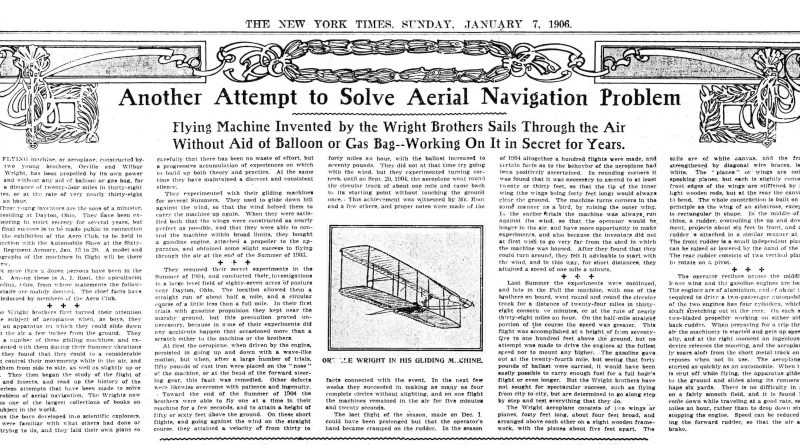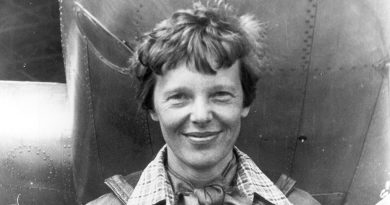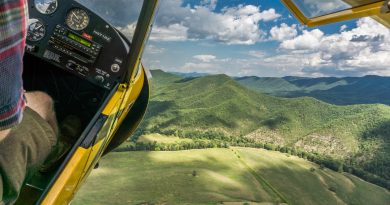How the Wright Brothers’ Pioneering Spirit Continues in Jetpack Development
The Wright Brothers’ pioneering spirit profoundly resonates in the ongoing development of jetpack technology. Their journey toward achieving the first controlled, powered flight was not just about inventing an aircraft; it was about embodying a mindset that valued relentless curiosity, innovative thinking, and the courage to venture into the unknown. This same spirit is vividly present in the realm of jetpack development.
Much like Orville and Wilbur Wright, who meticulously studied and overcame the challenges of aerodynamics, propulsion, and control, modern jetpack developers are engaged in a similar quest. They confront complex technical challenges, pushing the boundaries of what’s possible in personal flight. The Wright Brothers’ approach to problem-solving and their tenacity in the face of skepticism and failure is mirrored in today’s jetpack engineers and enthusiasts, who often venture into uncharted territories of engineering and design.
Moreover, the Wright Brothers’ vision of making flight accessible and personal laid the conceptual groundwork for jetpacks. Their belief in the potential of human flight transformed the way humanity viewed transportation and exploration. In a similar vein, jetpacks represent a continuation of this vision, striving to bring an even more personal and intimate experience of flight.
The development of jetpacks also echoes the Wright Brothers’ hands-on, experimental approach. Just as the brothers built and tested their own gliders and engines, jetpack innovators are often deeply involved in the iterative process of designing, building, and testing their prototypes, learning from each trial and continually refining their designs.
In essence, the journey of jetpack development is not just a technological endeavor but also a reflection of the human spirit that the Wright Brothers exemplified — a spirit that embraces challenges, dares to dream big, and persistently pursues the fulfillment of those dreams. This spirit, which propelled the Wright Brothers to their historic flight at Kitty Hawk, continues to inspire and drive the evolution of jetpack technology, keeping the dream of personal flight alive and soaring into new possibilities.
The Iterative Engineering Process
The iterative process of engineering, a fundamental approach in the development of complex technologies like jetpacks, is a cycle of continuous improvement and refinement. This method involves developing a concept, creating a prototype, testing it, analyzing the results, and then using this feedback to refine the design. In the context of jetpacks, this process is particularly crucial due to the intricate balance of power, weight, control, and safety involved.
Initially, engineers and designers conceptualize a jetpack design based on theoretical knowledge, engineering principles, and desired functionalities. They consider aspects like propulsion systems, control mechanisms, weight distribution, and ergonomics. Once a preliminary design is established, a prototype is created. This prototype is the first physical manifestation of the concept, but it’s rarely perfect.
Testing the prototype is a critical phase. It’s where the design is subjected to real-world conditions. For jetpacks, this means rigorous testing for flight stability, control responsiveness, fuel efficiency, and safety measures. The data gathered during testing is invaluable, highlighting both strengths and weaknesses in the design.
Analysis of the test results leads to insights and discoveries. Engineers evaluate what worked, what didn’t, and why. This step often reveals unforeseen challenges or opportunities for improvement. It’s a learning phase, where theoretical designs meet practical realities.
Refinement is the response to this analysis. The jetpack design is modified to address the issues uncovered during testing. This might involve tweaking the propulsion system for better efficiency, redesigning control systems for smoother handling, or reinforcing structure for greater safety.
This cycle of design, prototype, test, analyze, and refine is repeated, often multiple times, until the jetpack meets the desired standards and requirements. Each iteration brings incremental improvements, enhancing performance, reliability, and safety.
In this way, the iterative process in engineering is not just a method but a philosophy of continuous learning and adaptation. For jetpack technology, it embodies the pursuit of a dream that’s as complex and ambitious as human flight itself – a journey of constant advancement towards an ideal balance of power, precision, and safety.
The Wright Brothers
The Wright brothers, Orville and Wilbur Wright, were American aviation pioneers widely credited with inventing, building, and flying the world’s first successful motor-operated airplane. They achieved the first powered, sustained, and controlled airplane flight on December 17, 1903, near Kitty Hawk, North Carolina.
Wilbur was born on April 16, 1867, and Orville on August 19, 1871. The brothers grew up in Dayton, Ohio, and developed an interest in aviation at a young age, inspired by the German aviator Otto Lilienthal. Before their famous flight, they operated a bicycle shop where they gained skills in mechanics and engineering, which were crucial in their later aeronautical experiments.
Their first successful flight in 1903, with Orville piloting the craft, lasted 12 seconds and covered 120 feet. This historic event marked a significant milestone in human history, showcasing the potential for controlled, powered flight.
The Wright brothers continued to develop their aircraft designs, achieving longer flights and more control over their machines. Their work laid the foundation for modern aeronautics and had a profound impact on transportation and technology in the 20th century and beyond.
The Decision To Invent A Plane Rather Than A Jetpack
The Wright brothers’ decision to make an airplane rather than a jetpack was influenced by the technological and scientific context of their time. In the late 19th and early 20th centuries, the concept of powered flight was in its infancy, and the fundamental principles of aerodynamics were still being explored and understood. The idea of a jetpack, which requires advanced propulsion technology and a deep understanding of aerodynamics and materials science, was far beyond the technological capabilities of that era.
Instead, the Wright brothers were inspired by the progress and experiments in gliders and other flying machines. They were influenced by earlier pioneers like Otto Lilienthal and Samuel Langley, who focused on fixed-wing designs. The brothers sought to solve the challenges of controlled, powered flight, and their background in bicycle mechanics led them to approach these challenges with an emphasis on balance, control, and structural integrity – key aspects more suited to airplane design.
Their work was pioneering in the field of aeronautics, focusing on solving practical problems like lift, propulsion, and control, which were more directly applicable to airplane design. The concept of a jetpack, with its need for miniaturized, powerful propulsion and advanced control systems, was not a practical consideration given the technological and scientific understanding of their time.
The Difficulties Of Engineering A Jetpack vs. An Airplane
Building a jetpack is more challenging than constructing an airplane due to the inherent complexities of miniaturization and the need for a high power-to-weight ratio. While airplanes are indeed larger and travel longer distances, they benefit from the ability to distribute their engines’ power and weight over a larger structure. This structure provides stability, lift, and control, making it easier to manage the forces involved in flight.
In contrast, a jetpack must be small and light enough to be worn on the human body, while still housing an engine powerful enough to lift a person off the ground. This requires advanced technology to achieve the necessary thrust without being prohibitively heavy. Additionally, controlling a jetpack in flight demands a high level of precision and stability to keep the wearer safe, a significant challenge given the jetpack’s small size and the complexity of human movement.
Therefore, the challenges of designing a jetpack lie not just in its power requirements, but also in achieving a balance of size, weight, control, and safety – a balance that is more readily achieved in the larger, more stable design of an airplane.
If The Wright Brothers Were Alive Today Could They Make Jetpacks
If the Wright brothers were alive today, with their ingenuity and engineering skills, they could potentially contribute to the development of jetpacks, given the significant advancements in technology and scientific understanding since their time. Modern materials, computer-aided design, advanced propulsion systems, and a deeper knowledge of aerodynamics provide a vastly different landscape compared to the early 1900s.
The Wright brothers were exceptional at iterative design and problem-solving, qualities that would be invaluable in jetpack development. Their methodical approach to solving the challenges of powered flight, such as control, stability, and power, would be equally applicable to creating jetpacks. With access to today’s technology, they could apply their pioneering spirit to the complexities of personal flight systems.
However, it’s important to remember that their success would depend not just on their individual skills, but also on their ability to collaborate with modern engineers and scientists, and to utilize contemporary technologies and materials that were not available in their time.
Failure Preceding Success
The Wright brothers encountered many failures before their successful flight in 1903. Their path to success was characterized by a continuous cycle of trial, error, and learning. They started with gliders and faced numerous challenges in achieving controlled and sustained flight. These early experiments often resulted in crashes or did not meet their expectations, prompting them to reevaluate and improve their designs.
Their rigorous approach involved building a wind tunnel to test different wing shapes and control mechanisms. Each failure provided crucial insights, helping them understand the complex dynamics of aerodynamics and flight control. This iterative process was fundamental to their eventual success, embodying their resilience and dedication to solving the puzzle of powered, controlled flight. Their ability to learn from failures and persistently refine their designs was key to their historic achievement in aviation.
Approaching Jetpack Engineering With The Wright Brothers’ Mindset
The approach used by the Wright brothers can be applied to making jetpacks. Their method was grounded in careful observation, experimentation, and incremental improvements, principles that are timeless in the field of engineering and innovation. In developing jetpacks, which present complex challenges in aerodynamics, propulsion, and safety, this iterative process is especially relevant.
By systematically testing and refining designs, just as the Wright brothers did with their aircraft, engineers can gradually overcome the numerous technical challenges associated with jetpacks. This approach involves identifying problems through testing, learning from failures, and continually improving the design.
Moreover, the Wright brothers’ focus on understanding the fundamental principles of flight before attempting to build a practical flying machine is a valuable lesson for any complex engineering endeavor, including the development of jetpacks. Understanding the underlying principles of aerodynamics, propulsion, and control is crucial for creating a viable and safe jetpack.
The Principles Of Flight
The principles of flight are fundamentally the same for jetpacks and airplanes. Both rely on the core principles of aerodynamics, such as lift, thrust, drag, and gravity. However, the application of these principles differs due to the distinct design and purpose of each.
In airplanes, lift is generated by the wings, thrust is provided by engines, and control surfaces like ailerons and rudders facilitate maneuverability. An airplane’s larger structure allows for more stability and efficient distribution of forces.
For jetpacks, achieving lift and control in a much smaller, body-worn apparatus is more complex. Thrust is usually generated directly by engines or jets attached to the jetpack, and controlling flight requires balancing the human body in mid-air, which presents unique challenges in stability and maneuverability.
While the underlying aerodynamic principles remain consistent, their implementation varies significantly between the more stable and long-range capable airplanes and the compact, body-mounted jetpacks.
Aviation Engineering Inspiration
The Wright brothers were inspired by a combination of earlier aviation pioneers and the scientific knowledge of their time. They were particularly influenced by Otto Lilienthal, a German aviation enthusiast known for his extensive glider experiments. Lilienthal’s work in aerodynamics and his practical demonstrations of controlled flight played a significant role in shaping the Wright brothers’ approach to solving the problem of powered flight.
In addition to specific individuals, the Wright brothers were also motivated by the broader scientific and engineering research available at the time. They diligently studied the principles of aerodynamics, the experiences of other experimenters, and the mechanical technologies that were emerging in the late 19th and early 20th centuries. This blend of inspiration from pioneering individuals and the scientific knowledge of the era was crucial in their development of the first successful powered airplane.
The Wright Brothers’ Invention Goals
The Wright brothers did not attempt to invent jetpacks or significantly diverge from their focus on airplanes. Their primary interest and life’s work were dedicated to solving the problems of powered, controlled flight using heavier-than-air aircraft. After their successful flights in 1903, they continued to refine and improve their airplane designs, focusing on aspects like stability, control, and practicality for broader use. While they were inventors and had a broad interest in mechanical devices (evidenced by their earlier work with bicycles), their historical significance and inventive efforts are firmly rooted in the development of the airplane.
Conclusion
The success of the Wright Brothers and the ongoing goal to invent jetpacks offer insightful conclusions about the nature of human ingenuity and the evolution of technology. Firstly, both endeavors highlight the importance of vision in driving innovation. The Wright Brothers were not just inventors but visionaries who saw the potential of human flight, a vision that extends to the development of jetpacks. This shows how a powerful idea can persist and evolve over time, inspiring successive generations to push the boundaries of what’s possible.
Secondly, the journey from the first airplane to the development of jetpacks illustrates the incremental nature of technological advancement. The Wright Brothers’ success was built upon by others, leading to more sophisticated aircraft and eventually, the pursuit of personal flight devices like jetpacks. This evolution underscores how advancements in technology are often gradual and cumulative, building on previous knowledge and discoveries.
Another conclusion is the critical role of embracing challenges and learning from failures. Both the Wright Brothers and jetpack developers faced and continue to face immense technical and practical challenges. Overcoming these obstacles requires not just technical expertise but also a mindset that sees failure as an opportunity to learn and improve.
Moreover, these endeavors reveal the complexity of turning a bold dream into reality. The Wright Brothers’ achievement in making controlled, powered flight a reality transformed the world, and the quest for jetpacks continues this tradition of turning what once seemed like science fiction into feasible technology. It demonstrates the human capacity to conceptualize, design, and create technologies that fundamentally change our interaction with the world.
In summary, the success of the Wright Brothers and the ongoing development of jetpacks exemplify the enduring human spirit of exploration and innovation. They show how visionary ideas, when pursued with persistence, creativity, and a willingness to learn from setbacks, can lead to remarkable technological achievements that open new realms of possibility.



